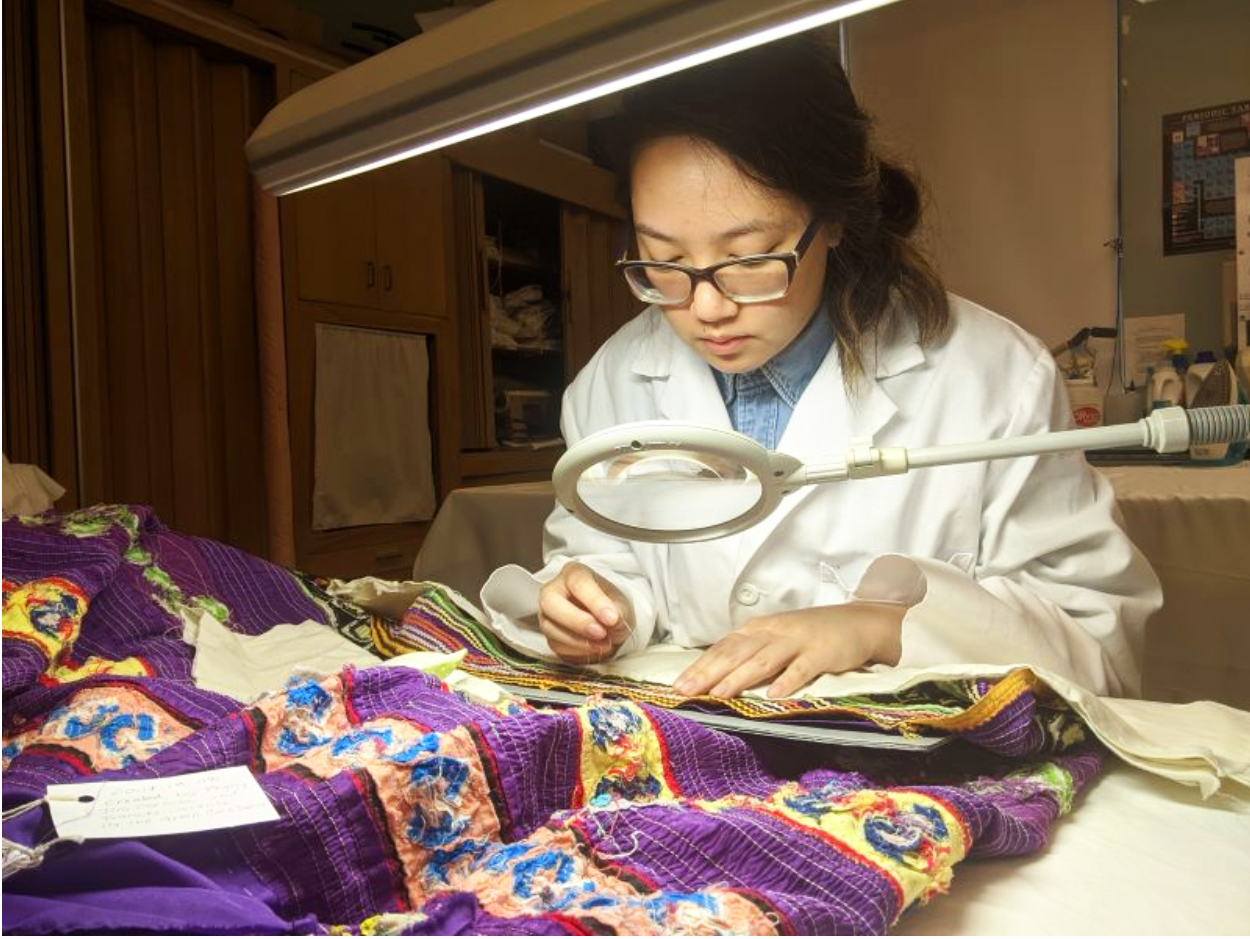Representing the ethnic diversity, socio-culture of our community and promoting respect and understanding of diverse ethnic identities in the United States, the department of textiles, fashion merchandising and design is holding a historical exhibit on campus this week.
The exhibit, titled “The Kaleidoscope of Textiles: Dress as Multidimensional Cultural Documents,” is in Quinn Hall and will be open all week from 9 a.m. to 4 p.m. It was curated by Jessica Strübel, a professor specializing in the social psychology of dress and appearance, and seven students from her ethnic dress and textiles class from the fall semester.
Strübel’s class collaborated with adjunct professor Rebecca Kelly’s class, special problems in textile conservation, to make the event possible. Strübel and Kelly paired the two courses together so that in Strübel’s class, students were researching the artifacts, and in Kelly’s class, students were conserving artifacts and getting them ready to go into the exhibit space.
Strübel said that when she first came to the University of Rhode Island, she was inspired by looking through URI’s Historic Textile and Costume Collection (HTCC), which has about 285 garments and artifacts from various ethnic groups.
“I had to come up with a project for the class, so the project turned into this thing of ‘Oh, we have these garments, these artifacts, that don’t have a lot of background information to them – this would be a perfect project for the graduate students to do where they have an artifact and they have to research it as a piece of material culture,’” Strübel said.
Strübel went into the collection, picked out artifacts and allowed students to choose which ones they wanted to research and conserve for the duration of the semester.
“We tried to get pieces from a multiplicity of ethnic groups simply to reflect that they are actually a truer reflection of the United States; that we are not a purely white nation,” Strübel said. “We have a history of immigration in the United States and these different waves of immigration are simply a reflection of our ethnic landscape we have here in the U.S.”
Michelle Leung, a graduate student who worked on the project, helped to create a virtual experience for audiences unable to attend the exhibit in person due to COVID-19.
“Each of us selected one to two garments from URI’s [HTCC] that was under-researched or under-documented,” Leung said. “Through our work, we discovered both a richness in design and meanings in patterns of indigenous resistance to assimilation and the affirmation of ethnic and national identities through dress.”
Students filled out a report to go into the database for the collection, looking at the material culture history and what it said about ethnic and cultural groups in the U.S. Some of these questions included: What does the material composition suggest about the particular culture? Why was the artifact produced? Who was wearing it? What was its function?
Students also explored whether owning or wearing the artifact revealed anything about the identity of the person wearing it. They looked into the history of these artifacts and where they originated from, how these artifacts were used in their cultures, if there was any information of the person that actually wore it and what the value placed on the garment by society was.
“The whole point was that we need to focus on these glaring omissions, not only in curriculums but in the national discourse that we have about ethnicity and culture,” Strübel said. “We needed to have a focus on the true ethnic diversity that we do have because we are diverging away from this stereotypical white eurocentric construct of identity.”

